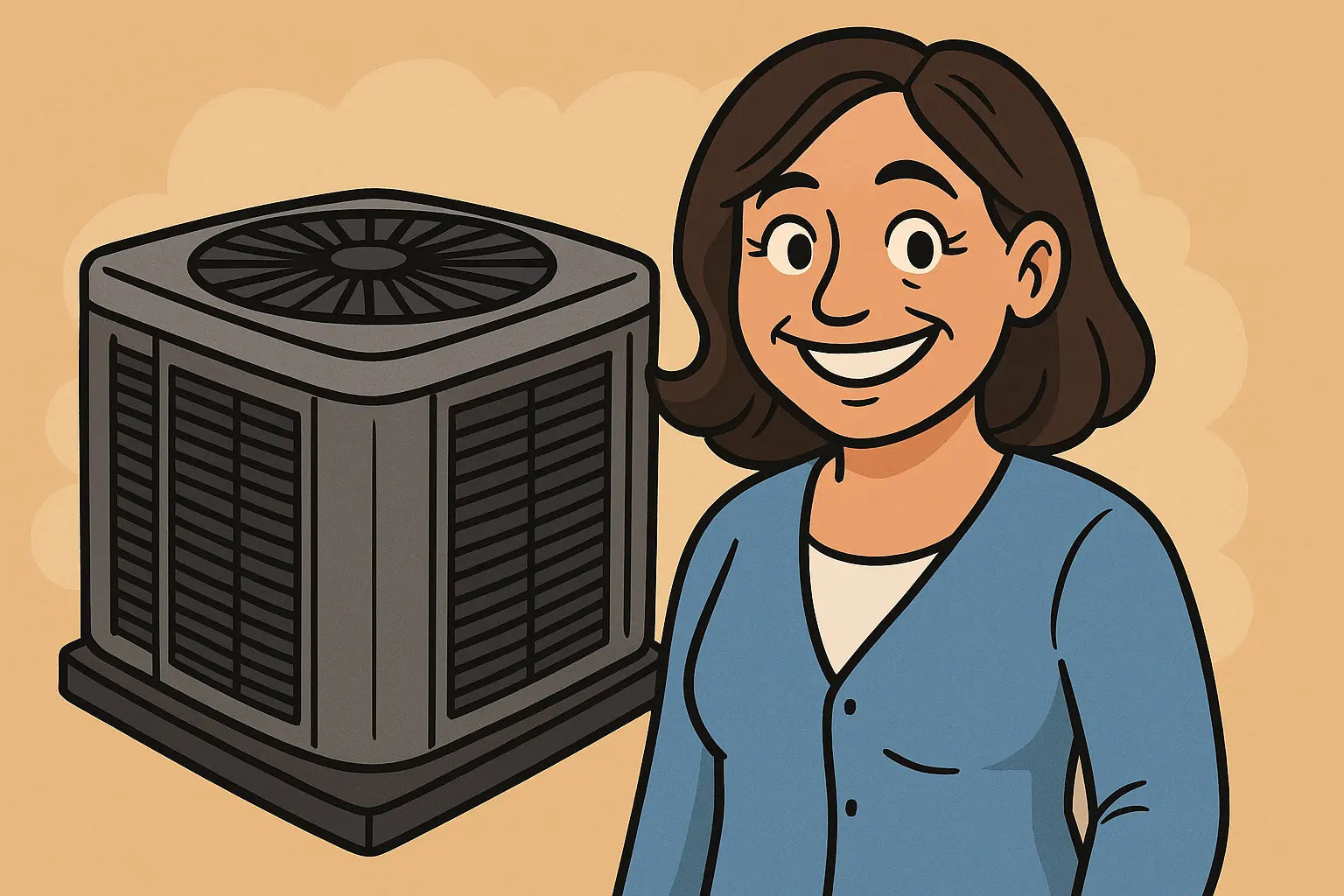Hey There, Cool Customer 💨
It’s your gal Samantha, and today we’re talking about something that even I—the queen of DIY filter changes—have had to come to terms with: knowing when to call in the pros.
You know me—I love a good checklist, a weekend HVAC project, and a satisfying “I fixed it myself!” moment. But sometimes, your central AC system throws a curveball even Google can’t catch. Maybe it’s a weird smell, a persistent airflow problem, or a unit that’s icing over in July (no thanks ❄️).
So let’s break it down, smart-shopper-style. Here's how you know it’s time to stop guessing and call a licensed HVAC tech, plus exactly what they’ll do when they roll up your driveway in that big branded van. 🚐💨
Red Flags: When It’s Time to Call a Professional 🚨
If you’re experiencing any of these issues, it’s time to bring in the cavalry.
1. Your AC Is Blowing Warm Air (and You’ve Tried Everything)
Before you panic, check your thermostat settings and change the air filter. Still hot air? A clogged refrigerant line, failed compressor, or broken reversing valve (for heat pumps) might be the culprit.
These are things you shouldn’t try to fix on your own—unless you're into electrical burns or refrigerant leaks. (Please don't be.)
2. Strange Sounds That Just Won’t Quit
A low hum is normal. But grinding, screeching, or banging? That’s your unit’s way of crying for help.
Whether it’s a failing motor bearing or a broken blower fan, the Department of Energy recommends professional inspections to ensure the system’s longevity and efficiency.
3. Weak or Uneven Airflow
If some rooms are breezy and others are Sahara-level stagnant, it’s time for ductwork diagnostics. This could mean blocked vents, duct leaks, or a malfunctioning blower motor—stuff that requires tools, training, and time most homeowners don’t have.
Need a visual? Just imagine crawling into your attic with a flashlight, a fog machine, and duct tape. Yeah, no thanks.
4. Unexplained Energy Spikes
A sudden hike in your electric bill with no change in usage usually signals your AC is overworking—either from a refrigerant leak, dirty coils, or failing components.
And yes, all of those require a licensed pro to handle, especially refrigerant issues. In fact, EPA regulations require certified technicians for anything involving refrigerants.
What an HVAC Tech Actually Does (So You Don’t Have To) 🔧
Let’s walk through what your friendly neighborhood HVAC tech will do when they show up at your door.
1. Initial Inspection and System Testing
They’ll start by checking:
-
The thermostat and control board
-
Air filters and registers
-
Outdoor condenser unit
-
Evaporator coils
-
Drainage and electrical connections
They’re looking for signs of blockage, overheating, voltage issues, and improper cycling.
2. Diagnostic Testing
Expect tools like multimeters, refrigerant gauges, and airflow sensors. They’ll get precise readings your smart thermostat can’t.
3. Leak Detection
If your system is low on refrigerant, they’ll conduct a dye test or use an electronic sniffer to track it down. Remember—handling refrigerants without a license is illegal and dangerous.
4. Repairs or Replacement Recommendations
Depending on the problem, they’ll recommend:
-
Cleaning and maintenance
-
Replacing faulty parts (capacitors, motors, fans, etc.)
-
Sealing ducts or refrigerant lines
-
Upgrading to a newer, more efficient system
A good tech will also walk you through what you can do to prevent issues in the future, like proper filter replacement intervals and coil cleaning schedules.
Avoiding HVAC Scam Artists 👀
Unfortunately, not every tech is trustworthy. Some signs to look for:
-
Vague pricing or “untraceable” parts
-
Pushing full replacement without diagnostics
-
No certifications or local licenses
To stay safe, stick with NATE-certified HVAC professionals and companies with verified online reviews.
What You’ll Pay (Ballpark Ranges) 💸
I get asked this all the time, so here’s a rough guide based on national averages:
| Service | Average Cost |
|---|---|
| Basic Diagnostic Fee | $75–$200 |
| Minor Repairs | $150–$500 |
| Refrigerant Recharge | $200–$600 |
| Major Repairs (Compressor, Coil) | $1,000+ |
| System Replacement | $4,500–$12,000 |
You’ll pay more if the unit is hard to access or if it’s peak season (yep, they get busy fast in July).
Pro Tip: Prevent Problems Before They Start 🧼
The best way to keep your central AC healthy? Routine maintenance. I recommend:
-
Changing filters every 1–3 months
-
Cleaning evaporator and condenser coils annually
-
Scheduling professional tune-ups every spring
If you’re feeling proactive, Energy Star recommends a spring maintenance checklist to keep everything in top shape.
The Final Chill 🧊
Listen, friend—there’s zero shame in calling for help. Even the most seasoned DIYers (hi, it’s me) know when to pass the wrench to someone with certifications, training, and the right set of gauges.
When you need a system that lasts, the best thing you can do—besides preventative care—is start with a reliable, properly sized central AC unit. You can find a curated selection I trust at The Furnace Outlet’s Central Air Conditioning Systems collection.
Want to connect a smart thermostat to your central AC? Visit: Stay Cool and in Control.
I hope this helped you breathe a little easier today (literally and figuratively). Until next time—stay cool and stay savvy! ❄️💁
- Samantha, Home Comfort Advisor







